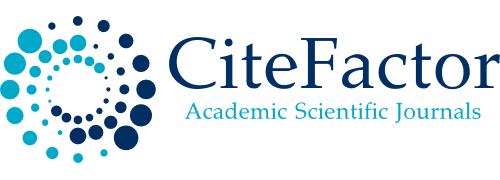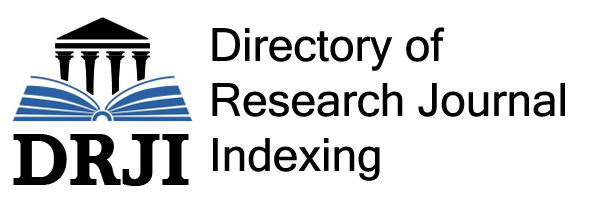Indexing & Abstracting







RESEARCH & PUBLICATION ETHICS
Ethics in Research Publication
Plagiarism, scientific fraud, and hidden competing interests are just a few of the difficulties that can jeopardise not just the integrity of science, but also a scientist's reputation. Understanding the ethical limits and "rules" is critical to ensure that your business and career start off on the right foot.
Authorship
Authorship of a scientific article guarantees that the right people get credit for the work and are held accountable for it. Misrepresenting a scientist's link to their work on purpose is considered a kind of misconduct that undermines trust in the work's reporting.
"All people identified as authors should qualify for authorship, and all those who qualify should be identified," the International Committee of Pharma Journal Editors (ICPJE) says in its authorship rules.
To be acknowledged as an author, you must meet all four criteria:
Some broad criteria, which may vary from field to field, are as follows:
Authorship disputes might arise if they are not addressed properly. Some disagreements are the result of wrongdoing (such as lying about one's part); others are the result of interpretation issues, such as the extent to which a person's contribution may be regarded "significant" and whether authorship is warranted.
If a dispute is reported, an inquiry involving the journal editor and the author's institution may be initiated to find a solution. Because of the possibility for ambiguity and miscommunication,
it is strongly recommended that a conference be held before the study begins to document how each individual would be acknowledged.
Competing Interest
A possible conflicting interest occurs when an investigator, author, editor, or reviewer has a financial/personal interest or belief that might compromise his/her objectivity or unduly influence his/her conduct. Dual obligations, conflicting interests, and conflicting loyalties are all terms used to describe such partnerships.
Financial connections, for example, are the most visible opposing interests.
Financial conflicts of interest that aren't disclosed might jeopardise the journal's, authors', and science's reputation. Conflicts can be hypothetical or actual, and not all connections constitute a legitimate competing interest. 1.2 Some things to evaluate include whether the person's affiliation with the organisation interferes with their ability to do the research or write the article objectively; and whether the link, when discovered later, makes a reasonable reader feel tricked or misled.
Full disclosure of a relationship that potentially represent a conflicting interest should be declared to the institution's ethical committee and the journal editor to whom an article is submitted, even if the individual does not feel it impacts their judgement. Most publishers need disclosure in the manuscript in the form of a cover letter and/or a footnote.
The wisest course of action is always full openness, and if in doubt, reveal.
Plagiarism
Plagiarism is one of the most prevalent forms of publishing misbehaviour, in which one author utilises another's work without permission, credit, or recognition.
Plagiarism can take several forms, ranging from outright copying to paraphrasing someone else's work, and can include the following:
Plagiarism can be classified into several levels of severity, including:
Always remember that attributing the work of others (including your advisor's or your own earlier work) is an important aspect of the process when it comes to your work. Always put
your work in the perspective of the field's growth, and recognise the results of others upon which your study is based.
Simultaneous submission
Simultaneous submission happens when a person submits a work to multiple journals at the same time, with the possibility of the article being published in more than one journal.
Duplicate publishing of original research is unethical because it might lead to "inadvertent double-counting or incorrect weighting of the outcomes of a single study, which distorts the available data."
The fundamental rule of thumb is that articles submitted for publication must be unique and have never been published elsewhere. Authors must provide any information about relevant studies (including those in a foreign language), similar articles in publication, and translations at the time of submission.
Research Fraud
The act of publishing data or conclusions that were not derived from tests or observations, but rather from invention or data manipulation, is known as research fraud.
Fabrication and falsification are major types of misconduct because they produce a scientific record that does not precisely represent what is seen.
Fabrication is the process of creating something from nothing. Creating research data and outcomes, then documenting or reporting them.
Most publications have rigorous limits on picture alteration and access to reported data to assist avoid fraud. It's a good idea to become acquainted with them before submitting a paper.
Manipulation of images
Data access & retention
